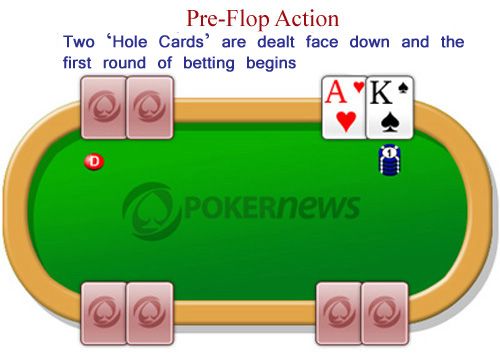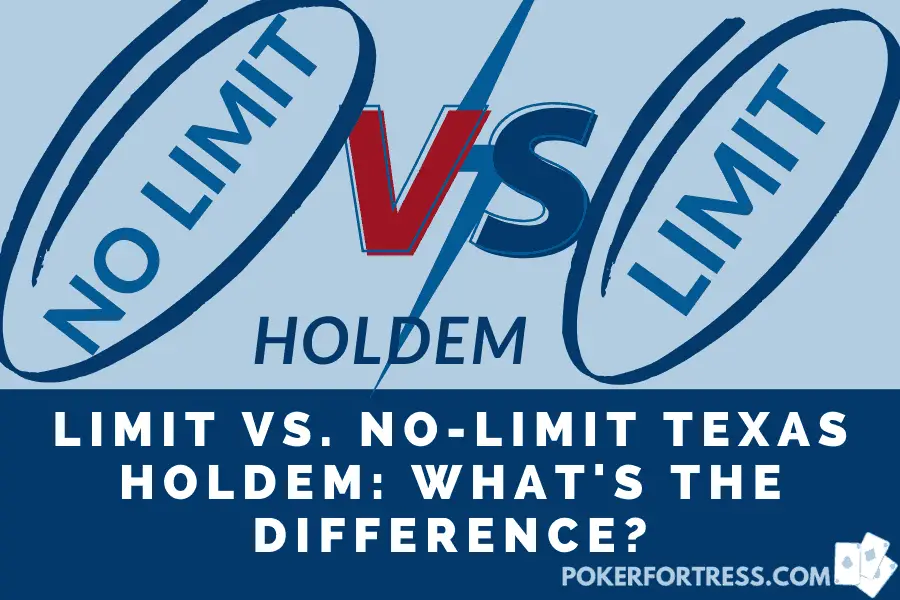Fixed Limit Poker Betting Rules
A raise in limit poker is always equal to the total of the previous bet, plus the addition of the current governing limit. In this scenario, the player chooses to raise. This means they put in a total of $4 ($2 to call the current bet of the big blind and $2 to raise the amount of the smaller limit). Understanding The Differences Between No Limit & Fixed Limit Poker Posted by on 2/13/2014 7:46:42 PM For the experienced online sports betting player that has spent a good amount of time playing Texas Hold ‘em Poker with limits and without them, the difference between the two games is common knowledge.

Badugi Poker is possibly the most unique form of poker to ever reach mainstream success. This poker game remains very popular in South Eastern Asia, particularly South Korea, where the game was first invented. badugi could be described as a four-card version of lowball triple draw with a twist. Not descriptive enough? Read on as we delve into the details to see how the game works, and what exactly makes it so different from anything you have ever played before.
Rules for Playing Badugi Poker
The underlying structure of a badugi game is just like traditional draw poker, but the goal is very different. We’ll cover hand rankings in greater detail in a moment, but for now you should know that each player wants to get the lowest cards possible without having any cards of equal rank, or any cards from the same suit. A hand with four cards of different ranks and suits is known as a “badugi”.
For this explanation, we will assume that you are playing at a $2/$4 fixed-limit table. badugi, just like most poker games, requires that a dealer button is used to mark the dealer position. After each hand, this position moves clockwise around the table, which is important for rotating player position. To start the hand, the player to the left of the dealer position must pay the small blind, which in this case would be $1. The player to the left of the small blind must post the big blind ($2). Once these blinds have posted, the dealer proceeds to deal four cards, faced down, to each player at the table.
The players can look at their own four-card hand, but no one else’s. Once all cards have been dealt the first round of betting, known as the pre-draw round, can begin. This betting round is started by the player to the left of the big blind who can choose to call the big blind (bet $2), raise (bet $4), or fold his hand. Play continues clockwise around the table until each player has bet as much as every other player, or folded. In these fixed limit games there can be no more than three raises per round.
After the first round of betting has come to a close, the first draw begins. Starting with the first player to left of the dealer position, each player can choose to discard any number of cards and receive the same number of replacement cards. After this there is another round of betting with the same limits, and the pattern continues. In total, there are three draws, and four betting rounds. The first two rounds of betting utilize the low limit ($2), while the second two rounds upgrade to the high limit ($4). If at any point only one player remains in the game, then that player wins the pot.
After the fourth betting round comes to a close, all remaining players must discard any cards necessary to ensure that they have no cards of duplicate rank or suit. The remaining cards constitute the players hand, which must be revealed at this point in the showdown. The player with the best hand wins the entire pot, but if two or more players have equal hands, then they split the pot equally.
Badugi Poker Hand Rankings
The hand rankings in badugi poker are not quite like anything else, but they do resemble lowball rankings, To start with, throughout the game you are trying to form a ‘badugi’. This means you have four cards of different suits and ranks. There are two criteria for ranking hands. The first is the number of cards each player can play. Not every player will play a four-card hand, because they must discard any cards with duplicate suits or ranks after the last round of betting. In the end, no matter what cards you are holding, the more cards you have, the better. If one player has more cards than all of the other players, then that player automatically wins.


Example:
Fixed Limit Poker Betting Rules Card Game
| Player | Final Four Cards | Final Hand | Number of Cards |
| Tom | 4 9 J K | 4 9 K | |
| Jane | A 5 7 8 | A 5 7 8 | 4 |
| Bob | 2 3 9 T | 23 9 T | |
| Lisa | 2 3 7 8 | 2 3 7 8 | 4 |
| Charles | A 9 Q Q | A Q |
In the example above we can see what four cards each player ended with, and what hand they played after discarding duplicates. Jane, Bob, and Lisa did not have any duplicate cards (suits or ranks) so they kept all four cards for their final hand. Tom’s 4 and his J are of the same suit, but since low cards are better, he discarded his J and was left with a three-card hand. Charles had duplicate queens, so he discarded one of them. He also had A and 9 which are of the same suit. Because you want low cards, and aces are low, he discarded his 9, leaving only 2 cards for his final hand. Jane, Lisa, and Charles are tied for having the most cards, so Tom and Charles are out.
If two or more players are tied for having the most cards in their hand, which is quite common, then you use traditional lowball rankings to determine the winner. Quite simply, the player with the lowest hand wins. To determine who has the lowest hand, you start by comparing only the players’ highest cards. If these are tied, then you compare their second highest cards. You may have to compare all four cards to determine the winner, but if at any point, one player’s card (first, second, third, or fourth) is lower than the other player’s corresponding card, then the lower card wins the hand. Remember, just like in other lowball poker games, aces are low!
Example (cont):
| Player | Final Hand | 1st Card | 2nd Card | 3rd Card |
| Jane | A 5 7 8 | 8 | 5 | |
| Bob | 23 9 T | – | ||
| Lisa | 2 3 7 8 | 8 | 3 |
Out of the three players that had ‘badugi’ (four-card hands), we need to find the lowest hand. When we compare their highest cards, Jane and Lisa are tied with 8’s, but Bob knocked out with his T. Jane and Lisa also have the same second card (7’s) so we go straight to their third card. Jane’s 5 is beaten by Lisa’s 3, so Lisa wins the entire pot.
Other Limit Structures for Playing Badugi Poker

In the above explanations we were using fixed-limits. While fixed-limit badugi is extremely popular, there are three other ways to structure the limits in a badugi game.
No Limit Badugi
No limit badugi, as the name suggests, does not employ any betting limits. Any bets greater than the big blind are accepted, and players can consequently choose to go all-in. No limit badugi probably isn’t the best game for new players to start with because of its unpredictable nature. A hand that starts tame can quickly spiral out of control, and playing all but the strongest hands to the showdown can be very expensive. If you feel you are ready grow out of fixed limit badugi and take your game to the next level, then you may want to consider playing without limits.
Pot Limit Badugi Poker
Pot limit badugi offers something of a compromise between the fixed limit and no limit variations. In pot limit poker, the size of your maximum bet is determined by adding the sum of all past bets as well the wager needed to call the bet at hand. Early on, the bets are kept relatively low, but as you get further into a pot limit game, and the size of the pot increases, the game begins to resemble no limit badugi. Pot limit is great way to add some excitement to your fixed limit game without having to deal with the insanity found in no limit badugi.
Half-Pot Limit Badugi
Fixed Limit Poker Betting Rules Against
If pot limit still sounds a bit too aggressive for your tastes, you may be able to find some games playing with half-pot limits. You tally up the pot exactly as if you were playing pot limit badugi, but your maximum bet is restricted to one half of the pot size. This is the perfect set up for risk averse players who are tired of fixed limit badugi.
A variation of poker game that is played more in live card rooms. As you can guess by the name, in limit poker betting (ie. bets, raises, re-raises) is limited to a certain limit. Each player can therefore only bet a specific, predetermined, amount. This amount is in most cases determined by the table limit. For example, when you sit at a $1/$2 limit table the following rules apply:
$1 before the flop (small bet)
$1 after the flop,
$2 on fourth street (big bet)
$2 after the river card
EXAMPLE “At my home game, we sometimes play $3/$6 limit poker.”
Related terms on PokerDictionary.net